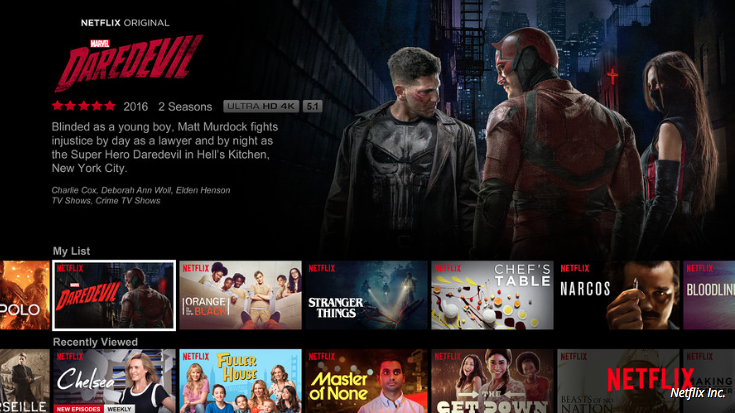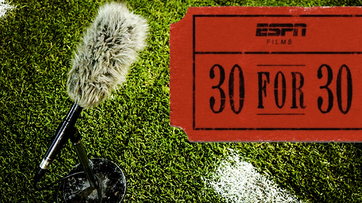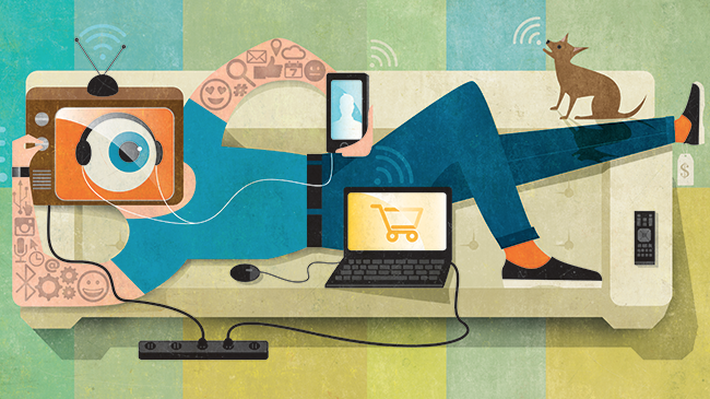|
9/22/2016 Why Netflix’s goal of 50% original content may be bad news for your binge watchingRead Now By Mike Murphy Binge-watching your favorite show might become a bit more difficult in the coming years, as Netflix Inc. moves toward its goal of creating half of the content the streaming service offers. Netflix Chief Financial Officer David Wells announced the 50% goal Tuesday at Goldman Sachs’ Communacopia conference. “We’ve been on a multiyear transition and evolution toward more of our own content,” Wells said, and “it will take us a couple more years” to reach that target. “We’re a third to halfway to where we want to be. … We’ve got a ways to go.” This year, Netflix NFLX, +0.66% said it will produce 31 series, with 600 hours of original programming — up from 450 in 2015 — and it will spend about $6 billion on original content in 2017. It has also started producing movies, such as Adam Sandler’s “The Do-Over” earlier this year and 2015’s “Beasts of No Nation.” Producing that much of its own content could be good for Netflix’s bottom line, eventually. Though likely resulting in higher — though one-time — costs for the near term to actually create the shows, the move could save significant money down the road, as Netflix will be able to get out of the licensing deals it currently must pay for outside programming. With more streaming services vying for the same content, the cost of licensing deals is soaring. In July, Netflix reached a five-year deal to stream shows from The CW Network eight days after they air, which could end up costing as much as $1 billion, according to a report by Variety. “You have supply and demand settling out,” Wells said Tuesday. “We would love to provide as many of those stories as possible to the consumer.” But while Netflix subscribers may be getting more original shows like “Stranger Things” and “Narcos,” they may be seeing significantly fewer second-run shows like “The West Wing” and “Sons of Anarchy.” Netflix has already started winnowing outside content from its lineup. A report earlier this year by AllFlicks found that Netflix’s catalog of movies and TV shows has dropped by 31% over the past two and a half years, slashing more than 2,500 titles. Many more titles are likely to drop off Netflix in the next few years as licensing deals expire. That means it’ll only get harder to catch up on movies and network TV shows. While streaming rivals such as Amazon.com AMZN, +1.58% and Hulu will likely pick up rights to some of the content Netflix drops, they too will likely shift their focus toward more cost-effective original content in the future. And that could be bad news for fans of non-blockbuster movies and older TV shows who likely will be left with fewer — if any — streaming options. For origin of article, please click here.
0 Comments
 By Christopher Heine It's the new golden age of audio. So it's not entirely surprising that there has been a wealth of new podcasts announced in recent weeks, especially last week during the Interactive Advertising Bureau's second annual Podcast Upfronts. But a big, recent push for sports content is especially intriguing, with Sports Illustrated unveiling a trio of programs, PodcastOne debuting an action-sports play and ESPN announcing that a podcast version of its award-winning, film-style 30 for 30 TV documentaries is forthcoming in early 2017. For sports podcasts to truly make their mark, they may have to differentiate themselves from sports talk radio, ESPN's calling card. Bob Dorfman, a sports marketing expert and creative director at Baker Street Advertiser, suggested the Disney-owned brand is on the right track. "Podcasts can succeed in ways that sports talk radio can't," Dorfman said. "Although they can't match the immediacy and participatory nature of sports talk radio, they can deliver superior storytelling, deeper analysis and richer interviews." We chatted with senior producer at ESPN Films and FiveThirtyEight Jody Avirgan, who's also a WNYC radio veteran and heads up the 30 for 30 podcasts. He gave us the scoop on what sports fans and media observers can expect from ESPN's new venture. Adweek: Have your higher-ups assured you they are going to push this venture across ESPN's properties, such as SportsCenter mentions and ESPN.com homepage real estate? Jody Avirgan: That's a big part of this project, and it was very attractive to me. The entire company is behind it. How much time will your team put into each episode? These will take months. We are giving ourselves the time we need to do them right and report them. They are not spinoffs of the 30 for 30 films. They are original stories, and they are going to be fully produced. We have to do all the interviews, all the research, all the archival work. It is going to take about the same amount of work that a film does. What will be different from the films in terms of the process? There's a team here at ESPN Films that develops an idea, and then it goes to an outside production company or director. That director will take the lead on the nuts and bolts of the production, and ESPN Films will be part of the editorial process—but not the day-to-day in many ways. The fact of the matter is the podcast industry isn't there yet. There's not a dozen of podcast production houses floating around who we could go to and say, "Hey, run with it." So you guys are doing it in-house? We are going to be doing a lot of that work here, inside the building, doing the actual reporting and production. That's why we are hiring a team of five producers who have radio and documentary backgrounds. I do want to get to the point where we are collaborating with other people, maybe even collaborating with filmmakers who would have otherwise made a 30 for 30 film. How long with the 30 for 30 podcasts be? Here's what I can tell you about the format: We are going to give ourselves the space to develop it the way it needs to be developed. I can tell you it won't be like a show—it won't be like flipping a switch, and there will be weekly shows. We are going to do these in batches and seasons. To do a real good documentary that goes deep and breaks some ground and actually has some reporting in it, we are going to need at least a half an hour or 40 minutes. You know, it's not going to be two hours, and it's not going to be 15 minutes. It's going to be a nice, sizable piece of real, narrative journalism. When it comes to the focus, a lot of the 30 for 30 docs have been flashpoints in sports culture history. The Miami Hurricanes one comes to mind—it's also really about the late 1980s and early '90s. So, will the podcasts be cultural flashpoints or slivers of sports history that's completely blown out in a fashion that hadn't been previously done? That's exactly what I am thinking about right now. When I think of my favorite 30 for 30s, I tend to lean toward the ones that have a bigger resonance—the ones that aren't just about a great sports story, but the ones that are about culture, society, politics and an era, the ones that can teach us a little bit more. I think the Miami Hurricanes 30 for 30 you mention is an excellent example, as is The Two Escobars. I have a journalism background. I come from public radio, so I think there's going to be a journalist DNA to most of these podcasts. I am really excited that the 30 for 30 model means there needs to be a great, great story. Your job is to get out of the way. Do what you can to let it ride, let it go from A to B to C to D. You can start to tell the larger [stories], so the listener can have those bigger thoughts. Yeah, a lot of sports podcasting simply reuses talk-radio formats. From the way you sound, this is clearly going to be something different. Yeah, I am hoping we can pull it off. Original publishing can be found on AdWeek.  By Tim Sims [Illustration by Traci Daberko] Years of being bombarded with irrelevant marketing has made one thing clear: Ads are more meaningful when tailored to consumer interests. Think back to the last decade. If you were reading your favorite news site in, say, 2007, advertisers were trying to grab your attention with a pop-up or flashing banner ad that caused you to stop what you were doing to look at it. Amazingly, that's still a media strategy for some advertisers, but interruptive display has become increasingly unpleasant for consumers and ineffective for brands. Fortunately, irrelevant ads are marching into obscurity. The rise of new formats such as native, audio and advanced TV allows brands to reach consumers in ways that tie in seamlessly with what they're already doing. This new breed of context-driven advertising actually improves the user's experience rather than distracting from it. Further, by implementing programmatic tools, marketers can reach unique audiences with ad messaging that is more relevant than ever before. Here's how brands are detracting the ad distraction: Native makes us better off More than anything else, native advertising has precipitated the shift toward immersive advertising. After all, by its very definition the format "follows the natural form and function of the user experience." As recently as five years ago, the concept of "sponsored content" was alien to many marketers. But social networks like Facebook and Twitter have made native advertising increasingly mainstream for today's internet users. The success of native is directly related to how it enables marketers to deliver informative, content-focused ads at scale. Native doesn't disrupt the consumer experience. Instead, it presents content, information or promotions within the context of the platform or website the user is browsing. The ad fits seamlessly into the user experience and they have the choice whether or not to engage with it. Considering native is more organic and less disruptive, it is more palatable to consumers and effective for marketers. According to a study from Sharethrough and IPG Media Lab, people are over 50 percent more likely to pay attention to a native ad than a banner ad, with native driving greater brand affinity and purchase intent. It's no wonder that U.S. native ad revenues will top $16 billion this year, per BI Intelligence, doubling to $33.5 billion by 2020. It may seem counterintuitive, but native campaigns are increasingly being bought and sold via programmatic. These solutions marry the impact of native with the efficiency of exchange-based ad buying and the targeting capabilities available to buyers through DSP platforms. Audio ads get sound results Online marketers are also using programmatic targeting tools to bring old-school TV and radio advertising into the digital age. For example, Spotify recently made its streaming music inventory available for programmatic buying, allowing brands to target users based on attributes such as age, listening habits, location and gender. Music is attached to almost everything consumers do. Audio connects and carries mood, memories and action. This emotive quality, coupled with its position as a permanent fixture in various consumer habits, makes audio a prime opportunity to serve ads that present products as a vital part of those routines or moments. With the proliferation of smartphones, streaming audio allows people to take on-demand music and podcasts with them wherever they go, whether they're commuting to work, driving to the grocery store or running through the park. This gives marketers a unique opportunity to join their audience on their daily routines and reach consumers without interrupting their day. This kind of contextual advertising also provides advertisers with a rich data set. These insights ensure ads are relevant to the user at the moment they're heard. For example, a fast-food chain can target a user listening to a morning "rise and grind" playlist with an ad suggesting they stop by a location they're traveling past for a free coffee. Keep viewers glued to their couches Meanwhile, programmatic TV is turning one of the most interruptive advertising mediums into one that encourages viewers to stick around through the commercial breaks. In the past, everyone watching a TV show in a certain geographic region saw the same ad. Brands have been dependent on Nielsen ratings to determine the audience's demographics, but these segments are often so broad that most viewers seeing ads aren't part of the target and would never even consider purchasing. With the emerging technology of programmatic TV, brands are able to layer on their own data to find shows that are being watched by more precise groups of people. This way, they can ensure that a larger percentage of the people watching an ad for, say, a minivan are actually families in the market for a new vehicle. Though the programmatic TV market is in its infancy, it's expected to grow into a $17 billion category worldwide by 2019, according to IDC. As this technology continues to develop, marketers will only become more capable of engaging TV viewers with ads that truly speak to their needs as consumers. Digital's immersive future Across the board, digital media is shifting to a model where successful advertisers are those that deliver their message in a way that feels natural and organic to the user experience. As the era of immersive advertising gains momentum, brands and agencies must begin thinking about how they can use developing formats, platforms and targeting tools to weave their storytelling into the various routines and activities their consumers participate in. They can either create relevant, engrossing ad experiences that people want to spend time with, or watch as consumers migrate toward those provided by their rivals. Ultimately, if you subscribe to the doctrine that all media is shifting to digital and all digital media will be bought and sold programmatically, then it is an exciting future for immersive advertising. It's time to make irrelevant, interruptive banners a thing of the past. Origination of article can be found here. |
Details
CreatorA. Brent Lovell Archives
May 2017
Categories
All
|

 RSS Feed
RSS Feed